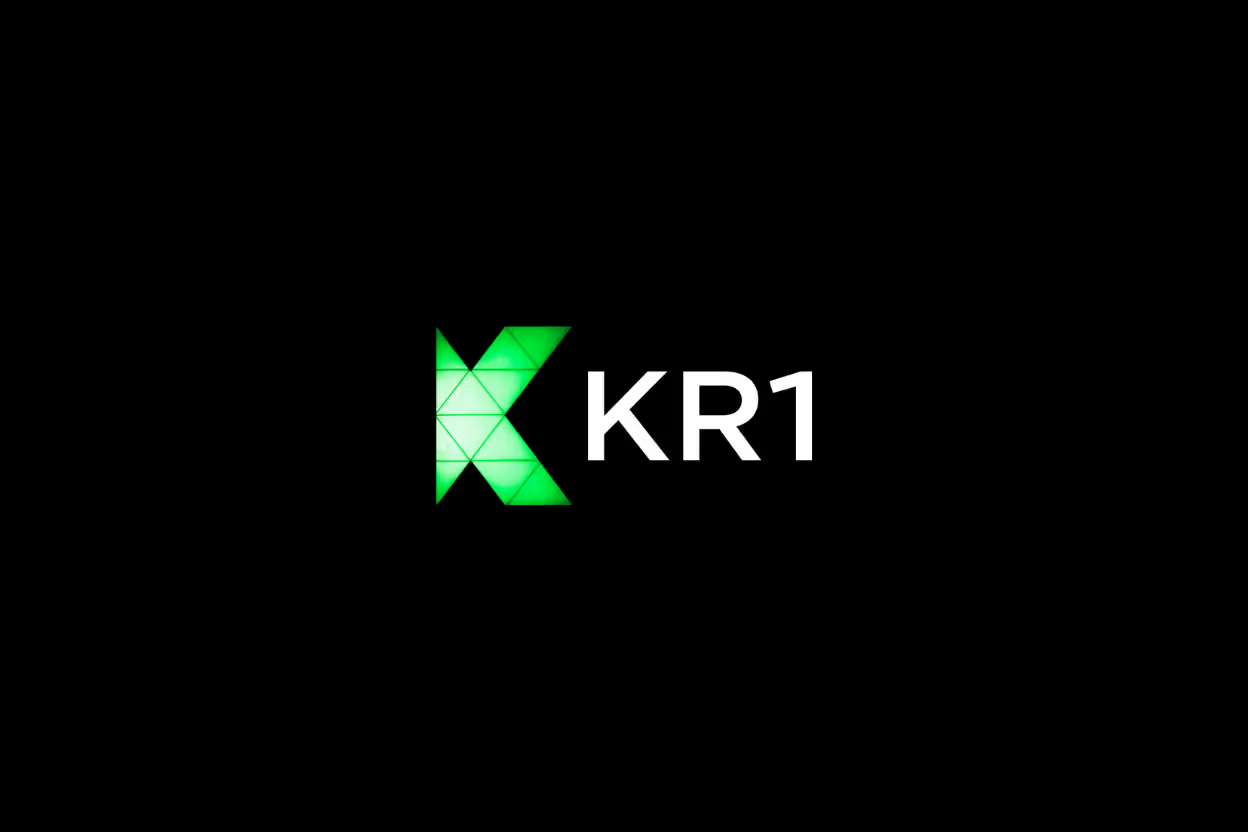Building a strong brand in the decentralized space calls for a different approach than traditional markets. Here, trust, transparency, and community aren’t just buzzwords—they’re the backbone of lasting connections. Founders and investors must focus on creating identities that users control and believe in, backed by clear, verifiable on-chain activity.
This new brand building means empowering communities to take part in governance and decision-making, making stakeholders out of users rather than just consumers. Success depends on combining data-driven insights with open, honest communication. For those aiming to build credible and sustainable brands in blockchain and Web3, understanding these unique challenges and opportunities is essential.
Fundamentals of Branding in a Decentralized Environment
As you build your brand in the decentralized space, it's important to recognize that the rules have changed. Traditional companies rely on top-down control and consistent messaging managed within a core team. Decentralized brands shift this balance, giving power and participation to the community and individual stakeholders. This means your brand’s identity, values, and visuals need to work differently—not just to reflect the technology but to truly connect with people who expect transparency, ownership, and shared governance.
Understanding Decentralization and Its Impact on Brand Identity
Decentralization means distribution of control away from a single, central authority. Instead of a company deciding everything behind closed doors, influence flows through a network of users, contributors, and token holders. This fundamental shift changes how brands form their identity.
In a decentralized environment, brand identity becomes more fluid and co-created, often shaped by many voices rather than one official source. Instead of a single narrative, your brand grows through community interactions, decisions made via governance mechanisms like DAOs, and visible on-chain activities. This means you’re no longer building a brand based solely on promotion, but on real, verifiable collaboration.
This approach raises new questions:
- How do you maintain consistent values when many participants influence the brand?
- What role does transparency play in solidifying your brand’s reputation?
- How should a brand balance formal identity with community-driven evolution?
Ultimately, decentralization invites brands to become living ecosystems—transparent, accountable, and open to change from within.
Core Values: Transparency, Ownership, and Community Governance
To thrive in this environment, certain values must be baked into your brand’s foundation. Sharing these clearly builds trust and motivates long-term engagement:
- Transparency. Everyone involved should know how decisions are made and how the project operates. This means sharing code, updates, finances, and governance processes openly. Transparency isn’t optional; it’s an expectation for credibility.
- Ownership. Empower your audience by giving them real stakes in the project—through tokens, NFTs, or voting rights. When people own part of the brand, they feel responsible for its success. Ownership aligns incentives and transforms users into active stewards.
- Community Governance. Decentralized brands must let the community participate in meaningful decisions. Governance isn’t just a buzzword—it’s the mechanism that sustains engagement and authenticity. Whether through DAOs or other frameworks, your brand needs a clear process for collective input and control.
These values shape every message you convey. They also influence how your brand responds to challenges—communities expect honesty and involvement, not secretive leadership.
Visual and Narrative Identity Adapted for Web3
How do you translate these principles into visuals and stories? Decentralized brands need identity systems that reflect openness and flexibility without losing coherence.
- Visuals. Your logos, colors, and design elements should symbolize transparency and community spirit. Think about modular designs or symbols that evolve as the project grows, rather than rigid, static marks. Visual consistency remains important but should accommodate dynamic representation—user-generated content, customizations, or co-created NFTs can play a role here.
- Narrative. Stories around your brand must be authentic and inclusive. Instead of top-down marketing messages, focus on communicating your mission, governance, and community values clearly. Let users share their experiences and contribute to the brand’s narrative. Transparency in your storytelling creates trust and deepens connection.
In summary, your brand in the decentralized space needs to be honest, adaptable, and community-driven—both in how it looks and what it says. By embracing these fundamentals, you’ll build a brand that people don’t just follow, but participate in and protect.
Building Trust with Technical and Social Strategies
Building trust in the decentralized space is both a technical challenge and a social opportunity. Your brand isn’t just a logo or a tagline; it’s a commitment secured by transparent systems and genuine engagement. Achieving this means combining the immutable power of blockchain technology with open, participatory community efforts. Let’s break down how you can approach this through three key paths: blockchain security, governance transparency, and active community involvement.
Leveraging Blockchain’s Security Features for Trust
Trust starts with security, and blockchain offers a distinct set of tools that solidify this foundation. At its core are three pillars:
- Immutability: Once data is recorded on a blockchain, it cannot be altered or deleted without network consensus. This creates an unchangeable audit trail where every transaction or decision is permanently visible. Think of it as a public ledger etched in stone, which anyone can verify at any time.
- Cryptography: Advanced cryptographic methods protect data integrity and user identity. Hash functions secure transaction records, while digital signatures confirm authenticity. This cryptography eliminates the risk of fraud or impersonation, making your brand’s activities tamper-proof and trustworthy.
- Consensus Mechanisms: Whether Proof of Work, Proof of Stake, or other algorithms, these methods ensure agreement across thousands of decentralized nodes before any change is accepted. This collective validation creates a system where no single party can manipulate the data.
With these in place, blockchain acts as an impartial referee that guarantees fairness and security. This technical backbone reassures your audience that your brand’s claims and actions aren’t just promises—they are verifiable facts. How often do you find a technology that makes trust automatic simply because it’s built in?
Transparent Communication and Governance Models
Trust isn’t just about technology; it comes from how you involve people. Decentralization calls for open governance structures like DAOs, which share power and responsibility openly.
- Open Governance: DAOs use blockchain-based voting systems so all stakeholders can see proposals, cast votes, and track outcomes transparently. This visibility removes suspicion and helps everyone understand how decisions occur.
- Clear Communication: Regular updates, open forums, and accessible records ensure your community stays informed and heard. Transparency means admitting challenges as well as successes, inviting feedback rather than hiding behind corporate walls.
- Accountability: When governance is public, it’s easier to hold leaders and contributors accountable. Everyone can check that processes follow agreed rules and that actions align with community interests.
These elements build credibility because they replace secrecy with openness and hierarchy with collective trust. In decentralized brands, governance isn’t just a structure; it’s an ongoing conversation that strengthens loyalty.
Engaging Community Through Incentivization and Participation
One of the best ways to deepen trust is to make your community part of the brand’s story.
- Participation in Decisions: Allow members to propose ideas, vote on projects, and contribute to roadmaps. This turns users into stakeholders, giving them real influence and ownership.
- Rewarding Contributions: Incentivize involvement with tokens, NFTs, or recognition programs. Whether people create content, detect bugs, or help onboard others, rewards encourage ongoing engagement.
- Creating Belonging: Host AMAs, virtual meetups, and contests to foster connection and enthusiasm. A motivated community feels invested, not just interested.
- Gamification: Leaderboards, badges, and challenges add fun and boost consistent participation.
By involving people in governance and rewarding their efforts, you create a cycle of trust and loyalty. Your community isn’t an audience; it’s a team that grows your brand from the inside out.
Trust in decentralized brands comes from a solid technical foundation and an authentic social experience. Combining blockchain security, transparent governance, and meaningful community interaction shapes a brand people want to support and defend.
Innovative Brand Experiences in the Decentralized Ecosystem
In the decentralized space, brands aren’t limited to traditional channels and static messages. There’s a unique chance to interact with users in ways that feel personal, verifiable, and community-driven. Blockchain and Web3 technologies open doors for innovative experiences that build loyalty beyond conventional expectations. From NFTs to virtual realities and strategic partnerships, brands can craft encounters that invite participation, offer exclusivity, and deepen trust. Let’s look closer at how these elements are shaping the future of brand engagement.
Utilizing NFTs and Decentralized Identities
NFTs offer more than just collectibles—they create unique touchpoints that users can truly own and verify. When a brand issues NFTs, they provide proof of authenticity and scarcity that cannot be duplicated or faked. This builds a foundation of trust and exclusivity. For example:
- Brands can release limited-edition digital assets tied to their products or experiences.
- NFTs can serve as membership passes, unlocking access to exclusive events or content.
- Smart contracts attached to NFTs enable automatic rewards or royalties, keeping users engaged long-term.
Blockchain-based decentralized identities (DIDs) further enhance this by allowing users to control and verify their identities online without relying on centralized platforms. This opens possibilities where brand interactions are linked with secure, transparent credentials. Customers can prove membership, purchase history, or participation directly on-chain, making brand relationships stronger and more personal.
These tools do more than authenticate; they turn interactions into verifiable experiences that reward loyalty and foster ongoing involvement. If your brand wants to offer something that feels real and lasting in a digital world, NFTs and decentralized identities are key.
Immersive Platforms: Metaverse and Beyond
Virtual worlds provide brands with new stages to connect with audiences beyond screens and physical events. The metaverse allows users to roam, socialize, and participate in branded activities through avatars and immersive 3D environments. Here’s why it matters:
- Virtual events and experiences: Launch products, host concerts, or create interactive exhibits that users can enter and explore.
- Gamification: Brands can integrate game mechanics, challenges, and rewards to make engagement fun and memorable.
- Immersive storytelling: Brands tell stories with visuals, sound, and interaction—making messages more emotional and influential.
These platforms are growing fast. Companies like Decentraland, Sandbox, and Roblox showcase how brands are crafting virtual storefronts and branded lands that customers visit daily. Why settle for one-way communication when you can build a space where users co-create and live your brand story?
Beyond just presence, immersive branding aligns with user ownership. Many metaverses use blockchain to secure digital goods, making virtual merchandise or NFTs part of a brand’s ecosystem. Such environments encourage loyalty and create new revenue streams while offering deeper ways for users to connect.
Collaborations and Cross-Project Partnerships
In decentralized ecosystems, no brand stands alone. Collaborations across projects expand reach, strengthen credibility, and allow access to new communities. Partnerships may look like:
- Co-branded NFT drops or virtual events with complementary projects.
- Integrations that add utility, such as token interoperability or shared governance tools.
- Combined marketing efforts that tap into partner audiences and social capital.
Because decentralized brands often rely on community and authenticity, partnerships build trust by showing alignment and mutual support. They often strengthen the entire ecosystem’s appeal and resilience while allowing each brand to focus on what it does best.
For founders and investors, these collaborations reduce risks and open pathways for innovation that would be impossible to achieve solo. They also underline a critical question: How can your brand deliver more value by working alongside others in this space?
Innovative brand experiences in the decentralized space come from embracing new technology and creating ecosystems where users aren’t just consumers but active participants. NFTs, immersive virtual spaces, and partnerships form the pillars of this transformation. Brands that seize these opportunities will engage audiences with authenticity, exclusivity, and shared ownership, building loyalty that lasts.
Measuring Brand Success and Adapting Strategies
In the decentralized space, measuring brand success requires more than traditional metrics like follower counts or impressions. Here, the strength of your brand is closely tied to how the community participates, how transparent your on-chain data appears, and how effectively you adjust strategies based on real user feedback. To truly understand how your efforts fare, focus on community engagement numbers, blockchain analytics, and continuous improvement through testing and listening. These components provide a clear picture of brand health and lay the groundwork for smarter decision-making.
Community Growth and Engagement Metrics
Tracking community activity is one of the clearest ways to measure your brand’s presence and influence. But what signals matter most in a decentralized context?
- User Activity: Look at active members on platforms like Discord, Telegram, and decentralized social channels. How often do users contribute, propose ideas, or vote? Regular interaction shows a living, breathing community.
- Social Sentiment: Monitoring sentiment on decentralized social platforms or forums helps gauge how people feel about your brand. Are users positive, neutral, or critical? Sentiment analysis tools can parse these tones, offering insights into how your messaging lands.
- Community Size: While growth in members is important, it's the quality of that growth that counts. Is your community expanding in meaningful ways? New members who engage and participate add more value than silent followers.
These metrics tell you if your brand resonates and if the community believes in your mission. They reveal whether your brand is more than a name—if it's a network people trust and want to support.
On-chain Analytics and Token Market Performance
Blockchain data offers objective signals that reflect brand health in ways traditional metrics can’t. Why settle for anecdotal evidence when you have transparent, verifiable numbers on-chain?
- Transaction Volume: High transaction frequency related to your token or services indicates active use and demand. It shows that people aren’t just watching—they’re engaging financially and functionally.
- Token Holder Distribution: Analyze how many users hold your token and the balance between large holders and smaller, diverse stakeholders. A broad distribution signals community ownership, reducing centralization risk.
- DAO Participation: Look at voting turnout and proposal engagement within your governance structures. Strong participation points to an invested community that influences your brand’s direction.
- Market Metrics: Price trends, liquidity, and market capitalization tell a story about perception and trust. Price stability coupled with steady growth often reflects confidence.
Using on-chain analytics helps you understand if your brand’s ecosystem is healthy. These numbers give you an honest, data-driven look at user commitment and ecosystem dynamics.
Iterative Testing and Feedback Loops
A brand in a decentralized environment can’t afford to stay static. You have to test, learn, and adapt constantly. How do you do that while keeping your community involved?
- A/B Testing: Experiment with messaging, visuals, or governance proposals in small, controlled ways. See what resonates best before wider rollouts. This reduces risk and uncovers clear preferences.
- Surveys and Polls: Direct questions to your community collect qualitative feedback. What do they want more of? Where do they see friction? Listening actively shows you value their voice.
- Community Feedback Channels: Maintain open forums, suggestion boards, and regular AMA sessions. Encourage honest criticism and praise alike. The most successful brands turn feedback into actionable changes.
- Data-Driven Iteration: Combine community insights with data from engagement and on-chain metrics. This layered approach ensures your strategy is grounded in real-world behavior, not assumptions.
Building a strong brand means treating it like a living entity—always responsive and improving. Engaging your community in this process reinforces commitment and trust.
The key to measuring success and adapting in decentralization is a blend of quantitative data and human insight. By tracking community health, monitoring blockchain signals, and embracing continuous feedback, your brand grows in step with the people who believe in it. Are you ready to listen and evolve? That’s where lasting strength begins.
Conclusion
Building a strong brand in the decentralized space demands more than traditional marketing. It requires a clear commitment to transparency, genuine user ownership, and active community governance. Trust grows from open communication, verifiable blockchain data, and meaningful participation.
Innovation through NFTs, immersive virtual experiences, and strategic partnerships can deepen user engagement and loyalty. Success depends on balancing a consistent core identity with the flexibility to adapt based on community feedback and on-chain insights.
Sustained brand strength comes from treating your brand as a living ecosystem—one that evolves with its users, keeps promises visible on the blockchain, and fosters real connection. How will your brand continue building trust as the decentralized space matures? This ongoing journey defines lasting value for founders and investors alike.
Thank you for reading. Share your experiences and questions to keep the conversation going.









